
Exophthalmus is a genus of broad-nosed weevils in the family Curculionidae. It contains 85 described species.
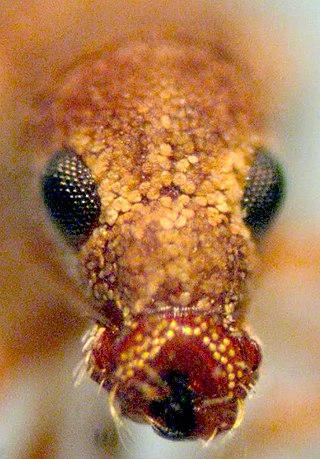
The Anypotactini are a Neotropical weevil tribe in the subfamily Entiminae. It includes 81 described species.

Entimini is a Neotropical weevil tribe in the subfamily Entiminae that includes 46 described species.

Eustylini is a primarily Neotropical weevil tribe in the subfamily Entiminae.

Geonemini is a weevil tribe in the subfamily Entiminae.

Polydrusini is a weevil tribe in the subfamily Entiminae.
Tanymecini is a tribe of broad-nosed weevils in the beetle family Curculionidae, subfamily Entiminae.
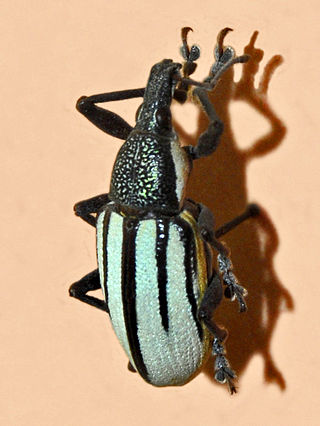
Diaprepes Schönherr 1823: 1140 is a genus of broad-nosed weevil belonging to the family Curculionidae, subfamily Entiminae, tribe Eustylini.
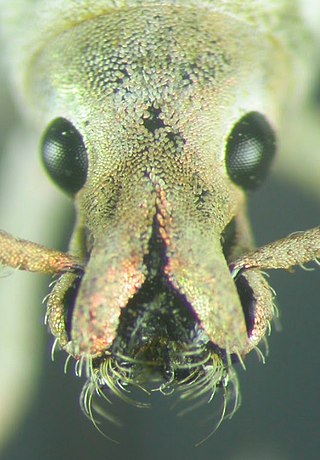
Compsus is a genus of broad-nosed weevils in the family Curculionidae, distributed across the Americas, primarily in northern South America.

Pandeleteius is a genus of broad-nosed weevils in the family Curculionidae. There are over 150 described species in Pandeleteius, distributed across the Americas. Most species in the genus were described by Anne Howden.
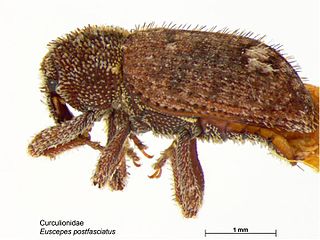
Euscepes is a genus of hidden snout weevils in the family Curculionidae. There are at least 20 described species in Euscepes.
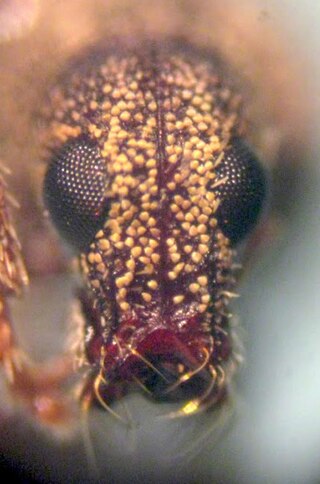
Polydacrys is a genus of broad-nosed weevils in the beetle family Curculionidae, subfamily Entiminae, tribe Anypotactini, present across the Americas and the Caribbean. There are eight described species in Polydacrys.

Polyteles is a South American genus of broad-nosed weevils in the subfamily Entiminae, tribe Entimini. There are seven described species distributed in Argentina, Bolivia, Brazil, Ecuador, Paraguay, Peru, and Uruguay.
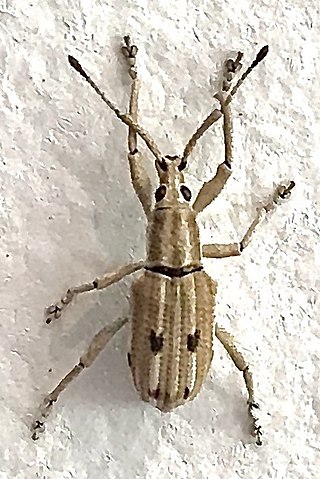
Eustylus is a neotropical genus of broad-nosed weevils in the subfamily Entiminae, tribe Eustylini.
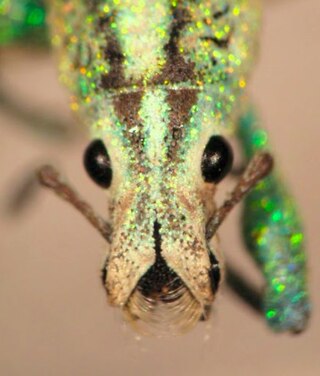
Oxyderces is a genus of broad-nosed weevils in the family Curculionidae distributed in South America. It can be recognized by the presence of dense setae on the apex of the rostrum and postocular setae.

Exorides is a genus of broad-nosed weevils in the family Curculionidae, tribe Eustylini, distributed in northern South America.
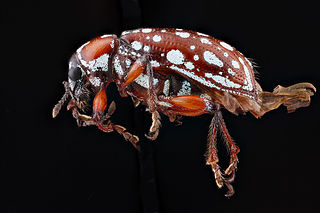
Lachnopus is a genus of broad-nosed weevils in the family Curculionidae distributed in the Caribbean Region.

Brachyomus is a Neotropical genus of broad-nosed weevils in the subfamily Entiminae, tribe Eustylini.

Anypotactus is a genus of broad-nosed weevils in the beetle family Curculionidae, subfamily Entiminae, tribe Anypotactini, present across Central and South America. There are six described species in Anypotactus.

Cyrtomon is a genus of broad-nosed weevils in the beetle family Curculionidae, present only in South America. There are six described species in Cyrtomon.


















